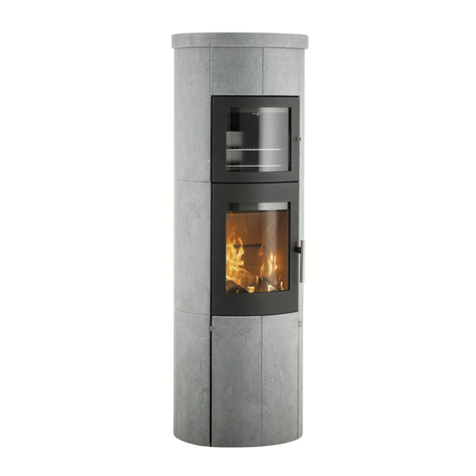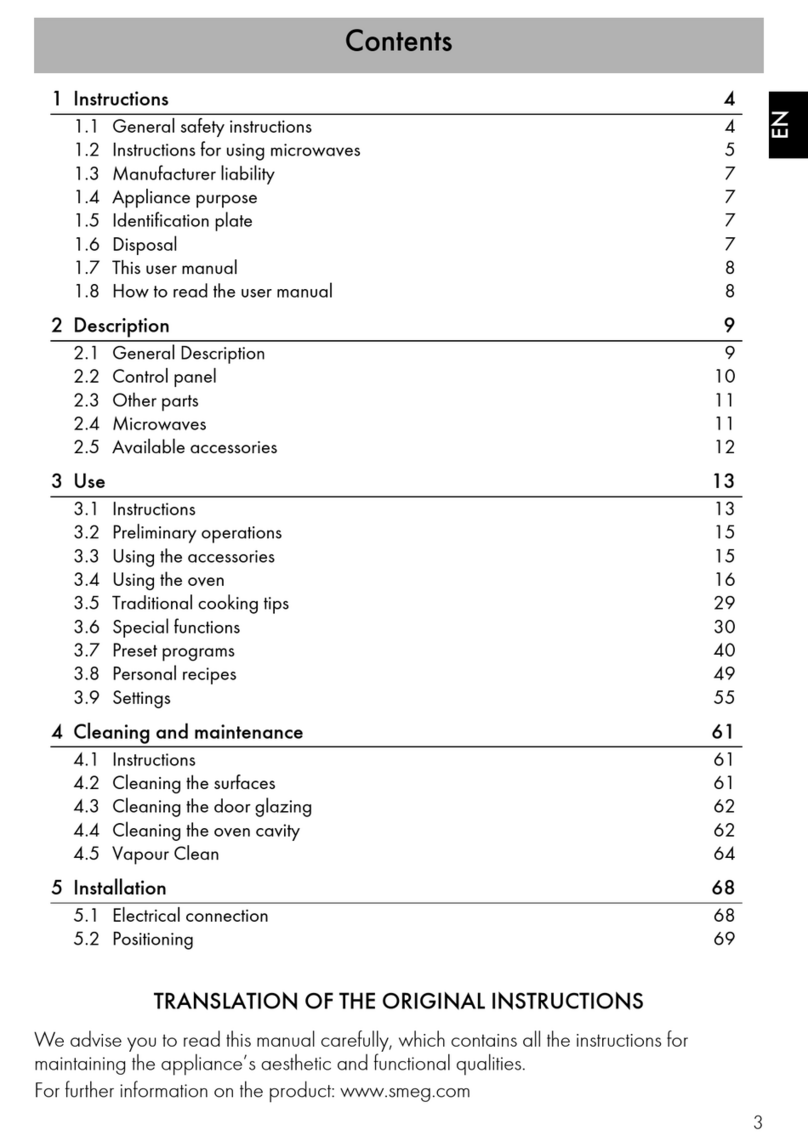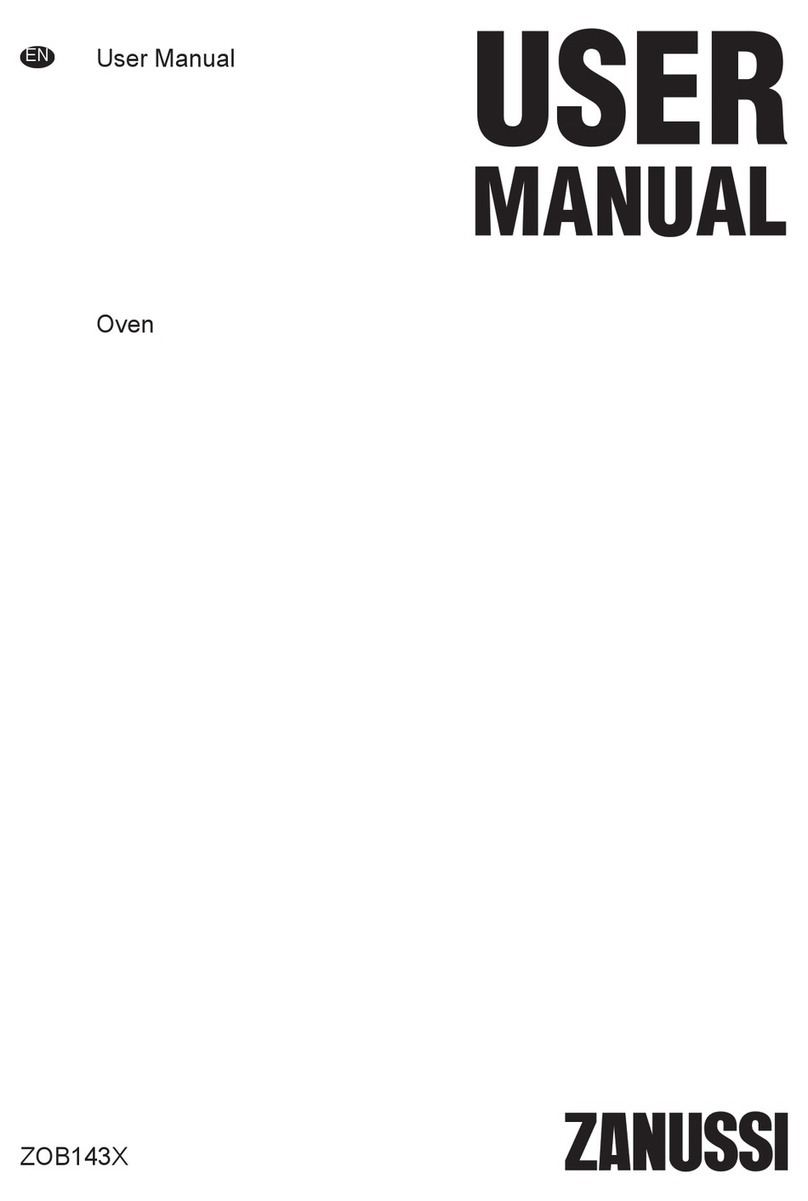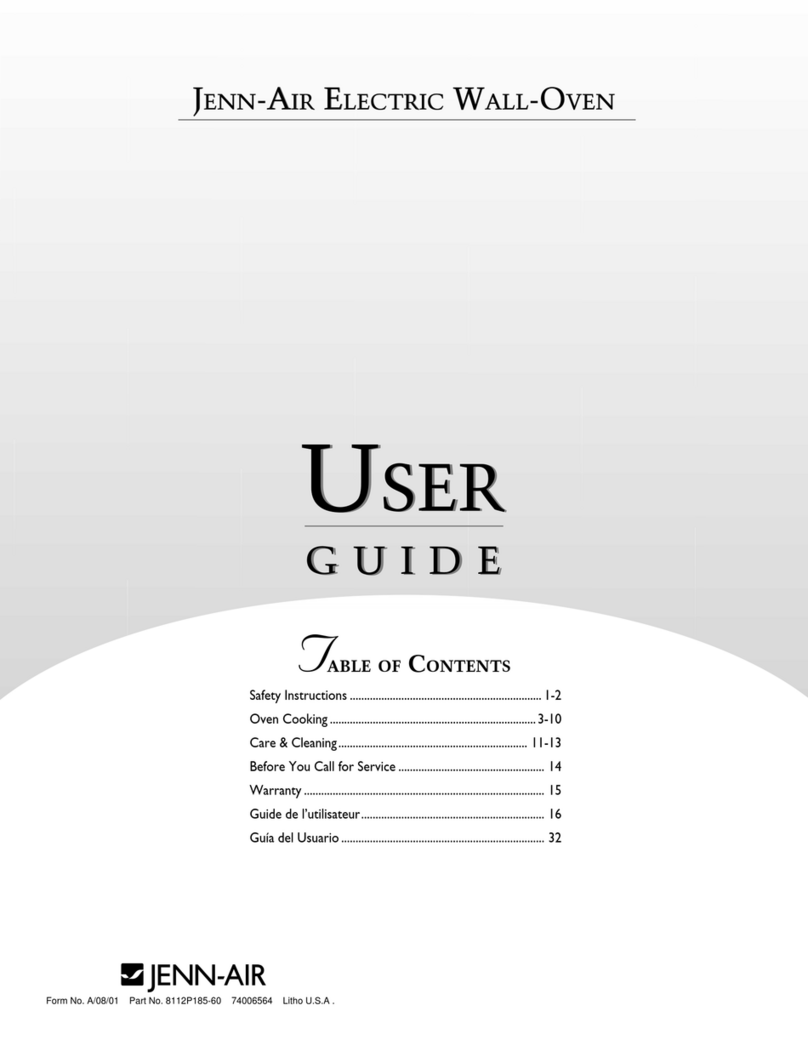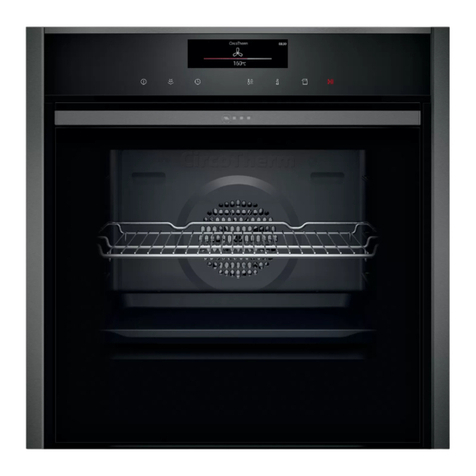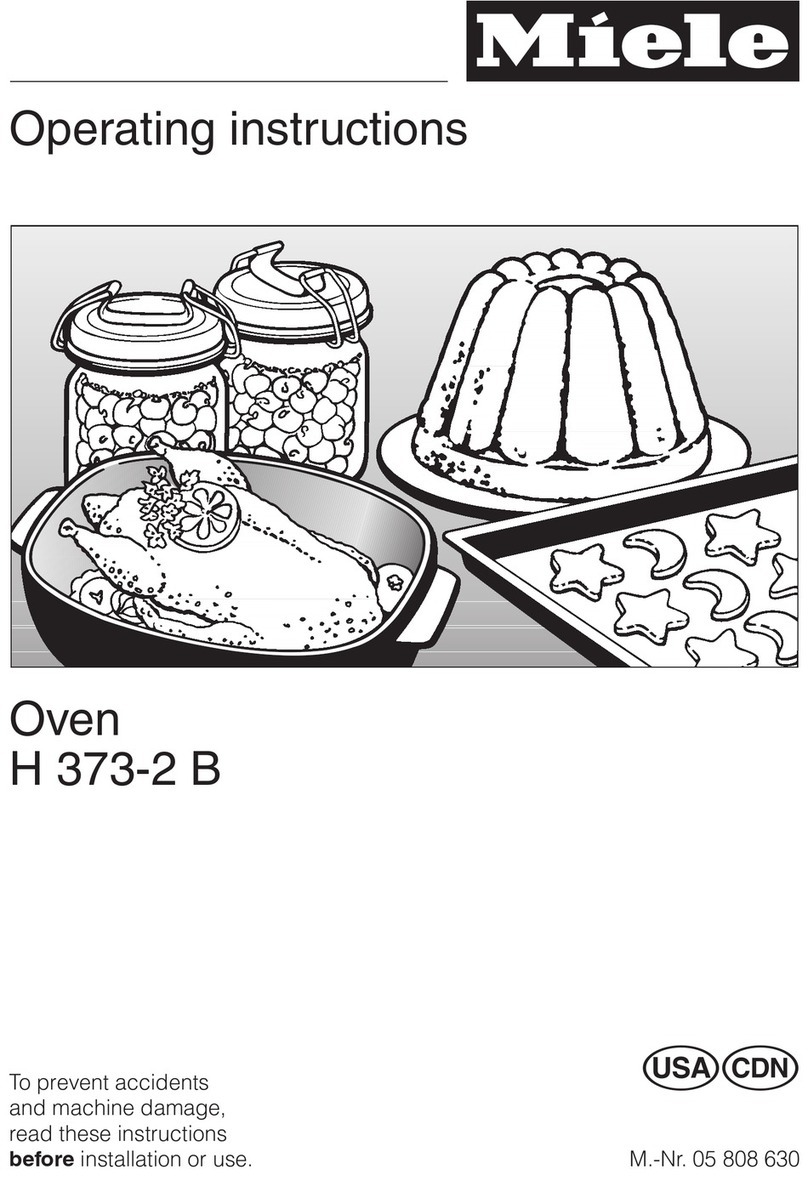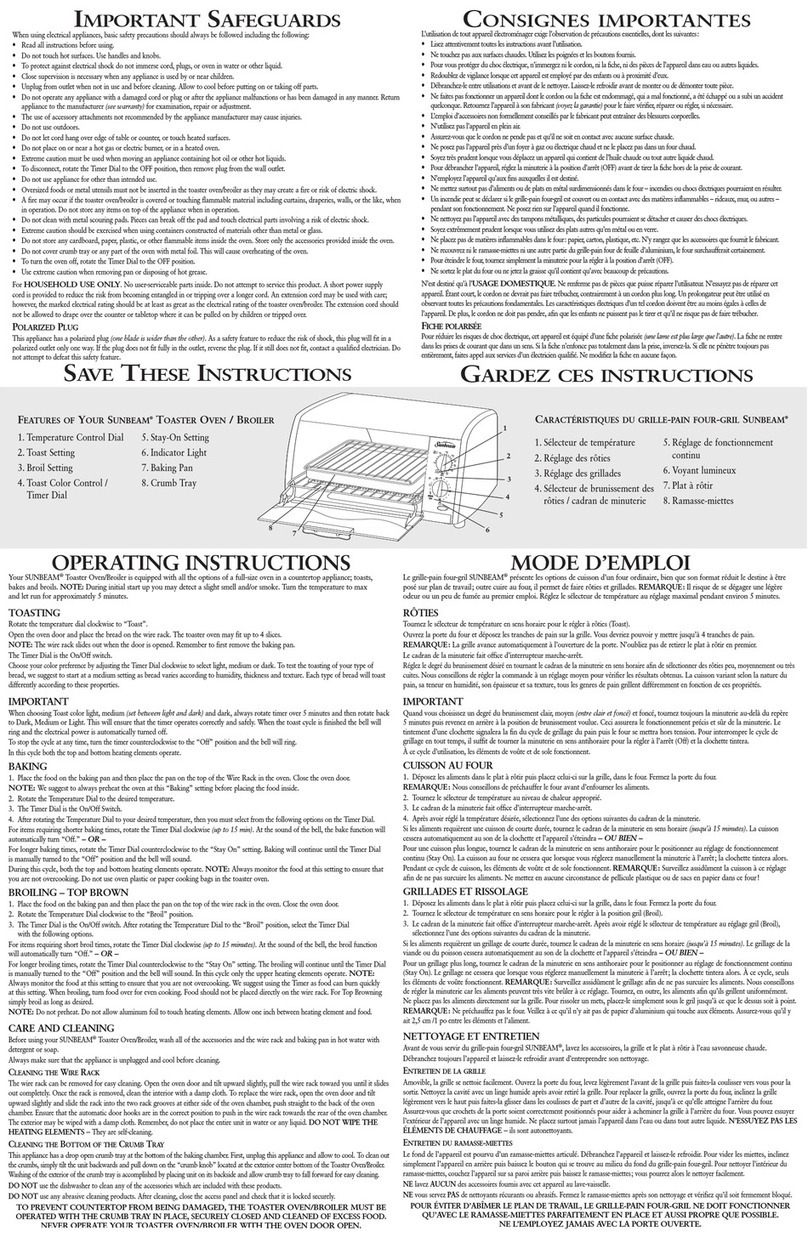Heta SCAN-LINE 80XL User manual

1
SCAN-LINE 80XL BAKING OVEN
OPERATING AND INSTALLATION
INSTRUCTIONS
DANISH DESIGN . DANISH QUALITY . DANISH PRODUCTION
www.heta.dk
EN

2
Congratulations on your new stove. We
are sure that you will be happy with your
investment, especially if you follow the
advice and instructions we have put
together in these operating instructions.
Scan-Line 800 combustion cham-
ber, and are therefore approved, like
the Scan-Line 800, under EN 13240,
DINplus, 15 a B-VG and NS 3058/3059.
Approval means that consumers can
be sure, that the stove meets a range of
IMPORTANT
1. Make sure there is adequate pro-
vision to sweep the chimney.
2. Make sure there is adequate ven-
tilation to the room.
3. Please note that any extraction
fans operating in the same room
as the wood-burning stove can
reduce the chimney draft – which
may have an adverse effect on
stove combustion properties. In
addition, this may cause smoke to
be emitted from the stove when
the firing door is opened.
4. It must not be possible to cover
any air vents.
The floor
It is essential to ensure that the floor
surface can actually bear the weight
of the stove and a top-mounted steel
chimney, if applicable. The stove must
stand on a nonflammable surface
such as a steel floor plate or a brick
or tile floor. The size of the nonflam-
mable surface used to cover the floor
area must match national and local
regulations.
The chimney connection
The chimney opening must follow na-
tional and local regulations. However,
the area of the opening should never
be less than 175 cm2, which corre-
sponds to a diameter of 150 mm. If a
specifications and requirements inten-
ded to ensure that the materials used
are of good quality, that the stove does
not adversely affect the environment,
and hat it is economical to use.
With your new stove you should have
received the following:
a. Operating instructions
b. A stove glove
Safety clearances
Stoves must always be installed in line
with national and, if applicable, local
regulations. It is important to abide by
local regulations regarding setting up
chimneys and connection to same.
Therefore, always consult your local
chimney sweep before installation, as
you are personally responsible for en-
suring that the applicable regulations
have been met.
Distance regulations
A difference applies to installation
next to flammable and non-flammable
walls. If the wall is made of non-
flammable material the stove can, in
principle, be placed flush against it.
However, we recommend leaving a
gap of at least 5 cm to facilitate clea-
ning behind the stove. The minimum
distances to flammable material are
stated on the boiler plate and are
listed in the table on page 7.
Warning
A stove gets hot. (In excess
of 90 degrees) Take care
to ensure that children can
not come into contact with
it. Combustible materials should
not be stored in the compartment
below the ashpan.
INSTALLATION INSTRUCTIONS

3
damper is fitted in the flue gas pipe,
there must always be at least 20 cm2
of free passage, even when the dam-
per is in its “closed” position. If local
regulations permit, two contained fire-
places can be connected to the same
chimney. However, you must abide by
local regulations regarding the distan-
ce between the two connections.
Wood-burning stoves must never
be connected to chimneys that are
also linked to a gasfired heater. An
efficient stove makes high demand on
chimney properties – so always have
your local chimney sweep evaluate
your chimney.
Connection to a brick chim-
ney
Brick a thimble into the chimney and
seat the flue gas pipe in this. The
thimble and flue gas pipe must not
penetrate the chimney opening itself,
but must be flush with the inside of
the chimney duct. Joins between
brickwork, the thimble and flue gas
pipe must be sealed with fireproof
material and/or beading
Connection to a steel chimney
When fitting a connection from a top-
output stove directly to a steel chim-
ney, we recommend fitting the chim-
ney tube inside the flue gas spigot so
that any soot and condensation drops
into the stove itself rather than col-
lecting on the exterior surface of the
stove. Changing smoke outlet from
top-mounted to rear-mounted (see fig.
14+15 on page 14).
For connections to chimneys that are
run through ceilings, all national and
local regulations regarding distance to
flammable material must be followed.
It is important that the chimney is
fitted with roof support so that the top
panel of the stove is not required to
bear the entire weight of the chimney
(excessive weight may cause damage
on or noise from the stove).
Draft conditions
Poor draft may result in smoke being
emitted from the stove when the door
is opened. The minimum chimney
draft to ensure satisfactory combu-
stion in stoves of this kind is 13 PA.
However, there will still be a risk of
smoke emission if the firing door is
opened during powerful firing. The flue
gas temperature at nominal output is
274°C when expelled to an exterior
temperature of 20°C. The flue gas
mass flow is 5.1 g/sec. The chimney
draft is generated by the difference
between the high temperature of the
chimney and the low temperature of
the fresh air. The length and insulation
of the chimney, wind and weather
conditions also have an effect on the
ability of the chimney to generate ap-
propriate under-pressure.
If the stove has not been used in a
while, check that the chimney and
stove are not blocked with soot, bird
nests, etc., before using it.
Reduced draft can occur
when:
• The difference in temperature
is too small – due to insufficient
chimney insulation, for example.
• The outdoor temperature is too
high – in summer, for example.
• No wind is blowing.
• The chimney is too low and shel-
tered.
• The chimney contains false air.
• The chimney and flue gas pipe are
blocked.
• The house is too airtight (i.e. when
there is an insufficient supply of
fresh air).
• Poor smoke extraction (poor draft
conditions) due to a cold chimney
or bad weather conditions can be
compensated for by increasing
the airflow into the stove.

4
INSTRUCTIONS FOR USE
Good draft occurs when:
• The difference in temperature
between the chimney and outdoor
air is high.
• The weather is fine.
• The wind is blowing strongly.
• The chimney is of the correct
height: at least 4.00 m above the
stove and free of the roof ridge.
First firing
The stove paint is fully cured from the
factory, but a minor unpleasant odour
could still arise.
Fuel
Your new stove is EN approved for
firing with wood fuel. You must there-
fore only burn clean, dry wood in your
stove. Never use your stove to burn
drifwood, as this may contain a lot of
salt which can damage both the stove
and the chimney. Similarly, you must
not fire your stove with refuse, painted
wood, pressure-impregnated wood
or chipboard, as these materials can
emit poisonous fumes and smoke.
Correct firing using well seasoned
wood provides optimal heat output
and maximum economy. At the same
time, correct firing prevents environ-
men-tal damage in the form of smoke
and emmissions and also reduces
the risk of chimney fires. If the wood
is wet and inadequately seasoned, a
large proportion of the energy in the
fuel will be used to vaporise the water,
and this will all disappear up the chim-
ney. Thus it is important to use dry,
well seasoned wood, i.e. wood with
a moisture content of no more than
20%. This is achieved by storing the
wood for 1–2 years before use. Pieces
of firewood with a diameter of more
than 10 cm should be split before
storing. The pieces of firewood should
be of an appropriate length (approx.
25 cm) so that they can lie flat on the
bed of embers. If you store your wood
outdoors, it is best to cover it.
Examples of recommended
woods types
and their typical specific gravity per
cubic meter stated as 100% wood
with a moisture content of 18%
Wood kg/m
3
Wood kg/m
3
Beech 710 Alder 540
Ash 700 Scotch
pine
520
Elm 690 Larch 520
Maple 660 Lime 510
Birch 620 Spruce 450
Mountain
pine
600 Poplar 450
Willow 560
It is advised not to use very oil-
containing woods like teak tree
and mahogany, as this can cause
damage to the glass.
Heating value in wood
You have to use about 2.4 kg normal
wood to replace one litre of heating
oil. All woods have almost the same
heating value per kg, which is about
5.27 kW/hour for absolute dry wood.

5
Wood with a moistness of 18% has a
efficiency of about 4.18 kW/hour per
kg, and one litre heating oil contains
about 10 kW/hour.
CO2release
At combustion 1000 litres of heating
oil forms 3.171 tons CO2. As wood
is a CO2neutral heat/ energy source,
you save the environment about 1.3
kg CO2every time you have used 1 kg
normal wood.
Chimney fires
In the event of a chimney fire – which
often results from incorrect operation
or protracted firing with moist wood
– close the door and shut off the se-
condary/start-up air supply to smother
the fire. Call the fire department.
Airflow regulation
The combustion air flow is control-
led by the handle at the top right, as
shown on fig. 1.
The combustion air flow is fully open
when the handle is as far back as
possible. Combustion air is gradually
reduced by moving the handle for-
ward, and is completely shut off when
it reaches the front position.
Before commencing, it is very impor-
tant to ensure the aeration vent (Fig.
2) in the oven is closed, as shown in
Fig. 3.
Place larger logs over the fire-lighting
material, at right angles to the door.
Turn handle to top position for max.
Combustion- airflow. The stove door
should be slightly ajar (about 1 cm).
When the wood is well lit and the
chimney is hot (after about 10 mi-
nutes), close the stove door. When
lighting the stove from cold, we re-
commend that the combustion airflow
is at maximum until the first stack of
wood has burned out so that the stove
and chimney are heated through.
Adding fuel
A fresh supply of fuel should nor-
mally be added while there is still a
good layer of hot embers. Spread
the embers over the base grate,
most towards the front of the stove.
Lay a single layer of wood fuel cor-
responding to about 1.5 kg over the
Fig. 1
From the
front
Closed Open
Lighting the stove
To light the stove, use firelighters,
paraffin firelighter bags or small
pieces of wood. Place over the grate.
Closed
Closed
Fig. 3
Fig. 2

6
Optimal combustion
For optimal combustion and heating,
this stove is designed to provide an
optimum mix of primary and se-
condary air (in these instructions, we
call this combustion air). The stove
provides excellent heating efficiency
and the window is easy to maintain as
the secondary air ‘flushes’ the surface
of the glass. Note that the stove will,
of course, blacken if the airflow is too
low. If there is too little oxygen, there
is a risk that the window, etc. will
Blacken due to the formation of soot
deposits. A combination of incorrect
combustion and damp wood fuel can
cause a heavy, sticky coat of soot
to form, which may cause the door
seal to tear off next time the door is
opened.
Risk of explosion
After you add new fuel, it
is very important that you do
not leave the stove unat
tended until the wood is burning
constantly. This will normally occur
within 30 to 60 seconds.
A risk of explosion can possibly arise if
too much wood is placed in the stove.
This may result in the production of
large volumes of gas, and this gas can
explode if the intake of primary and
secondary air is insufficient.
It is an advantage always to leave some
ash lying in the bottom of the comb-
stion chamber.
Take care when emptying the ash
pan, as cinders can continue to burn
in the ash for long periods of time.
embers, at right angles to the stove
door. Turn handle into top position
(max. Combustion- airflow). Keep
door ajar if necessary. (The door
should not be left open but fuel will
ignite more quickly while the door is
ajar.) The wood should ignite within a
very short time (usually 1-3 minutes).
If the door is ajar, close it as soon as
the fuel is ignited. When the flames
spread across the fuel stack, adjust
the combustion airflow to the required
level. Nominal operation 5.5 kW cor-
responds to 70% combustion airflow.
When adding fuel, make sure that the
fuel is not too tightly packed, as this
will lead to poorer combustion and
fuel inefficiency.
Never fill firewood over the stove’s
max. fill line. See fig. 4.
Max. fill line.
Fig. 4
Reduced rate of combustion
The stove is suitable for intermittent
use. If you require a lower rate of heat
effect, fill the combustion chamber
with less wood. Allow lower combu-
stion airflow. Do not forget that the
combustion airflow must never be
completely closed when lighting up.
It is important to maintain the layer of
embers. Low-effect heating is achie-
ved when the wood is glowing, i.e.
there are no more flames because the
wood fuel has been transformed into
glowing charcoal.

7
PURPOSE OF THE CONVECTION VENT
Stoves in the Scan-Line 80 series are
radiated-heat stoves, which use sev-
eral kilograms of soapstone and stone
mass to store heat. You can get even
more out of the stored heat by regu-
lating the convection air flow. Once
the stove has heated up, pull out the
convection vent as shown in Fig. 5 to
close the vent and prevent any more
air from flowing through the stove. The
stove will then release the heat slowly
into the room over the next several
hours.
Fig. 5
Stove data table in accordance with EN 13240 testing.
Stove
type
Scan-Line
series
Nominal
uegas
tempera-
ture c°
Smoke
stub
mm
Fuel
volume
kg
Draught
min
mbar
Nominal
output
tested
kW
Heat
output
%
Distance to flammable
materials in mm
behind at the
the stove sides
Distance to
furnitures from
the stove in
mm
Stove
weight
kg
SL 80 XL
baking
oven
soapstone
274
ø150
1.5
0.13
5.5 79 125 300 900
388
SL 80 XL
baking
oven
ceramics
274
ø150
1.5
0.13
5.5 79 125 300 900
308
The nominal output is the output to which the stove has been tested.
The test was carried out with the secondary air 80% open.
Closed Open

8
The chimney must be swept at least
once a year, we recommend the use
of a NACS (national association of
chimney sweeps) registered chim-
ney sweep. In the event of smoke or
malodorous fumes being produced,
you must first check to see whether
the chimney is blocked. The chim-
ney must, of course, always provide
the minimum draught necessary to
ensure that it is possible to regulate
the fire. Please note, however, that
chimney draft is dependent on the
weather conditions. In high winds, the
draft can become so powerful that it
may be necessary to fit a damper in
the flue gas pipe to regulate the draft.
When cleaning the chimney, soot and
other deposits may come to fall on the
smoke turning plate. In cases where
the wood burns too quickly, this may
be due to excessive chimney draught.
You should also check to make sure
that the door seal is intact and cor-
rectly fitting.
If the stove it generating too little heat,
this may be because you are firing
with wet wood. In this case, much of
the heating energy is used to dry the
wood, resulting in poor heating eco-
nomics and an increased risk of soot
deposits in the chimney.
OPERATIONAL PROBLEMS
MAINTENANCE
The surface of the stove has been
treated with heat-resistant paint.
The stove should be cleaned with a
damp cloth. Any damage to the sur-
face in the form of chips or scratches
can be repaired using touch-up paint,
which is available in spray cans.
Cleaning the glass
Incorrect firing, for example using
wet wood, can result in the viewing
window becoming covered in soot.
This soot can be easily and effectively
removed by using proprietary stove
glass cleaner.
Cleaning and repairing
soapstone surfaces
Soapstone is a relatively soft natu-
ral product. It is therefore possible to
repair scratches or other damage to the
surface.
Cleaning soapstone surfaces
Clean soot, grease, etc. from surfaces
using water and soft soap or similar.
- Spread the soap on the surface
- Let it stand a few minutes
- Rinse off the surface using hot water
- Once the surface is dry you can sand
it gently if necessary using sandpaper
(120 grit)
Minor scratches and impact marks
Gently sand using sandpaper (120 grit)
until the scratches are gone. It is a good
idea to use a sanding block. To main-
tain a uniform surface on the stone, the
entire surface should be gently sanded
at the end.
Chipped surfaces
This section covers more serious
damage, such as if a piece has chip-
ped off or is missing. If the chipped off
piece is intact, it can be glued in place
using ’waterglass’ (available from Heta
A/S). Apply waterglass to the surfaces,
clamp in place for 24 hours, then sand
using sandpaper (120 grit). If a piece
is missing or an impact mark is deep,
you can repair the damage using a mix

9
of soapstone powder and waterglass
(available from Heta A/S). Mix the pow-
der and waterglass to an appropriate
consistency. Clean off any dust before
applying the mixture. Brush the surface
with waterglass to ensure good adhe-
sion. Apply the soapstone mixture gene-
rously, as it contracts during hardening.
Do a repeat application if necessary.
The hardened surface can be sanded af-
ter 24 hours. Use 60-80 grit sandpaper
initially, and then 120 grit sandpaper to
finish.
Cleaning ceramic surfaces
The ceramics have a glazed surface and
can be wiped with a damp cloth.
Cleaning the oven
The oven should be cleaned using an appropriate household oven cleaning agent.

10
Warning
Any unauthorised modification
of the stove and any use of
non-original spares will void
the guarantee.
GUARANTEE
The model Scan-Line 800 stoves are
subjected to stringent quality con-
trol procedures both throughout the
produc-tion process and immediately
before delivery to the dealer. Therefo-
re, the stoves are guaranteed against
defects in manufacturing
FOR FIVE YEARS.
This guarantee does not cover: Wea-
ring parts/fragile parts such as:
• The fire-proof bricks in the combu
stion chamber.
• The smoke baffle
• The glass
• The sealing rope
• The grate frame
Damage resulting from incorrect use
Transport costs in connection with
repairs carried out under guarantee
Installation/disassembly in connection
with repairs carried out under guaran-
tee. Should you have cause to make
a complaint, please quote our invoice
no.

11
Fig. 6
CONNECTING EXTERNAL AIR SUPPLY
(OUTSIDE AIR)
The stove allows connection to out-
side air through a Ø 100 mm inlet
An aluflex Ø 100 mm hose is re-
commended (available from Heta),
which can handle temperatures up to
200° C
Fig. 6 illustrates the two options –
downwards or backwards.

12
Fig. 7
Emptying the ash pan, fig. 7-10
The ash pan is located behind the
large pull-out front (see fig. 7) and is
emptied as shown in fig. 8-11. NB! Be
sure to correctly orient the ash pan,
otherwise it will not close properly.
8910
11
2 x Grease -
Grease not
included.
Lubricate Ash pan

13
Flue outlet
Blanking plate
Fig. 13
Changing flue outlet position from top to rear
The stove flue outlet position must be
changed to the rear position before in-
stalling the cladding. It is a good idea
to remove the two heat storage stones
before making the change.
Swap the flue outlet connector with
the blanking plate on the rear.
After swapping the flue outlet con-
nector and blanking plate, the stove is
ready for rear flue connection.
Fig. 12

14
Fig. 16
For top flue outlet
Cut the small metal bridge connecting the cover to the convection vent.
For rear flue outlet
If the rear flue outlet is being used, the cover in the convection vent must NOT
be removed. The cladding must be positioned with holes at the top, in line with
the installation instructions for soapstone/ceramic Scan-Line 80XL baking oven
stoves. The dimensions on the drawing below have been measured from the
bottom edge of the backplate, and do not take into account the height of the
adjustable feet.
Fig. 15Fig. 14

15
Cleaning after sweeping the chimney and replacing the
stones. Fig 17-23
17
23
222120
19
18

16
Scan-Line 80 XL
baking oven
INSTALLING SOAPSTONE AND CERAMIC
PANELS
Heta recommends that stove installation be carried out by two people.
The soapstone and ceramic panels must be handled with extreme care, as the
corners and edges are very fragile.
If the rear flue outlet is to be used, it is best to change this before installing the
cladding. See the operating instructions for Scan-Line 80 XL baking oven.
Before commencing installation, ensure that the stove is level by adjusting the
height of the feet.

17
EEE
EE
EE
C
D
GG
AB
CLADDING TYPE AND PRODUCT NUMBERS
Product no.
soapstone
Qty SL 80XL
baking oven
A0023-2277 1
B0023-2278 1
C0023-2279 2
D0023-2280 2
E0023-2281 14
G0023-2283 2
H0023-2381 2
The product numbers are shown on the rear sides of the elements.
H H

18
EEE
EE
EE
C
D
GG
CLADDING TYPE AND PRODUCT NUMBERS
Product no.
ceramic
Qty SL 80XL
baking oven
A0023-2365 1
C0023-2366 2
D0023-2367 2
E0023-2368 14
G0023-2370 2
H0023-2372 2
The product numbers are shown on the rear sides of the elements.
H H

19
Remove the air adjustment lever before installing the cladding (10 mm spanner).
Start installing the cladding at the bottom rear section of the stove.
The first cladding stone (C or D) has a hole for outside air connection.
Attach the cladding stone to the casing and insert the mounting pegs (47 mm
from the top of the cladding stone) in the large circular holes in the keyholes,
close to the side panel. Let the stone slide down so the pegs are at the bottom
of the keyholes.

20
These two brack-
ets may need to be
adjusted up or down
to adjust the height of
the soapstone/ceramic
panels in relation to the
door.
This can be done using
pliers or a hammer.
Stoves are shipped from the factory
with a 1 mm gap between the side
plates.
This gap can be adjusted using
screws (6 on the SL 80XL baking
oven) to match the space between
cladding panels C and D.
This manual suits for next models
1
Table of contents
Other Heta Oven manuals
Popular Oven manuals by other brands
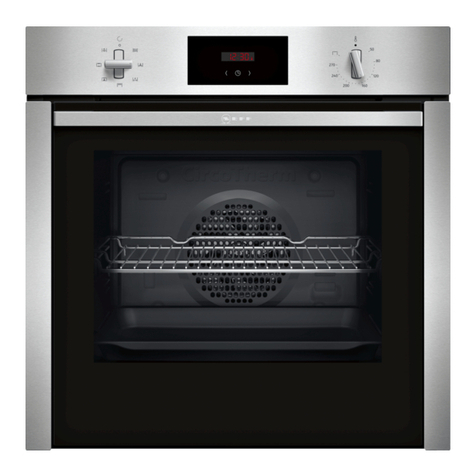
NEFF
NEFF B3CCC0A.0B User manual and installation instructions

Smiths
Smiths PB304 User manual and installation instructiions
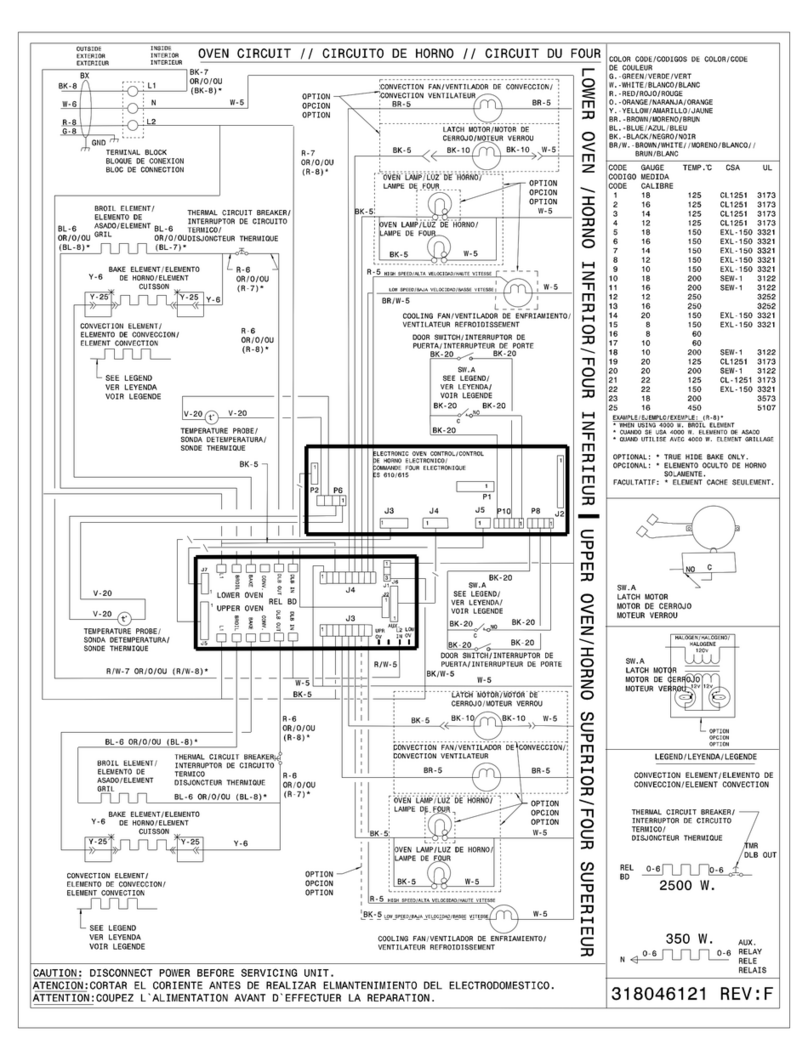
Frigidaire
Frigidaire FEB30T7FCB Wiring diagram
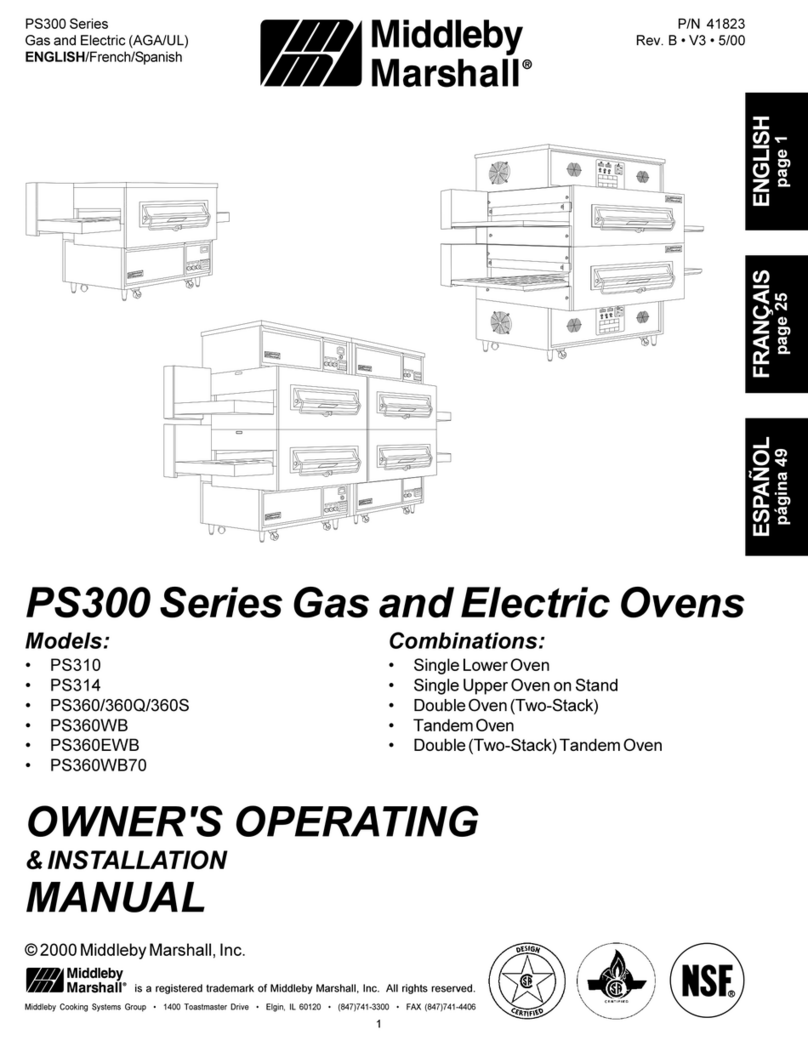
Middleby Marshall
Middleby Marshall PS300F Owner's operating & installation manual

Frigidaire
Frigidaire CPET3085KF Specifications
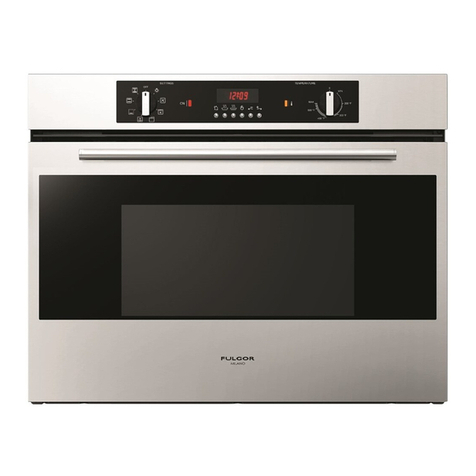
FULGOR
FULGOR F1SM30 1 Series installation instructions
